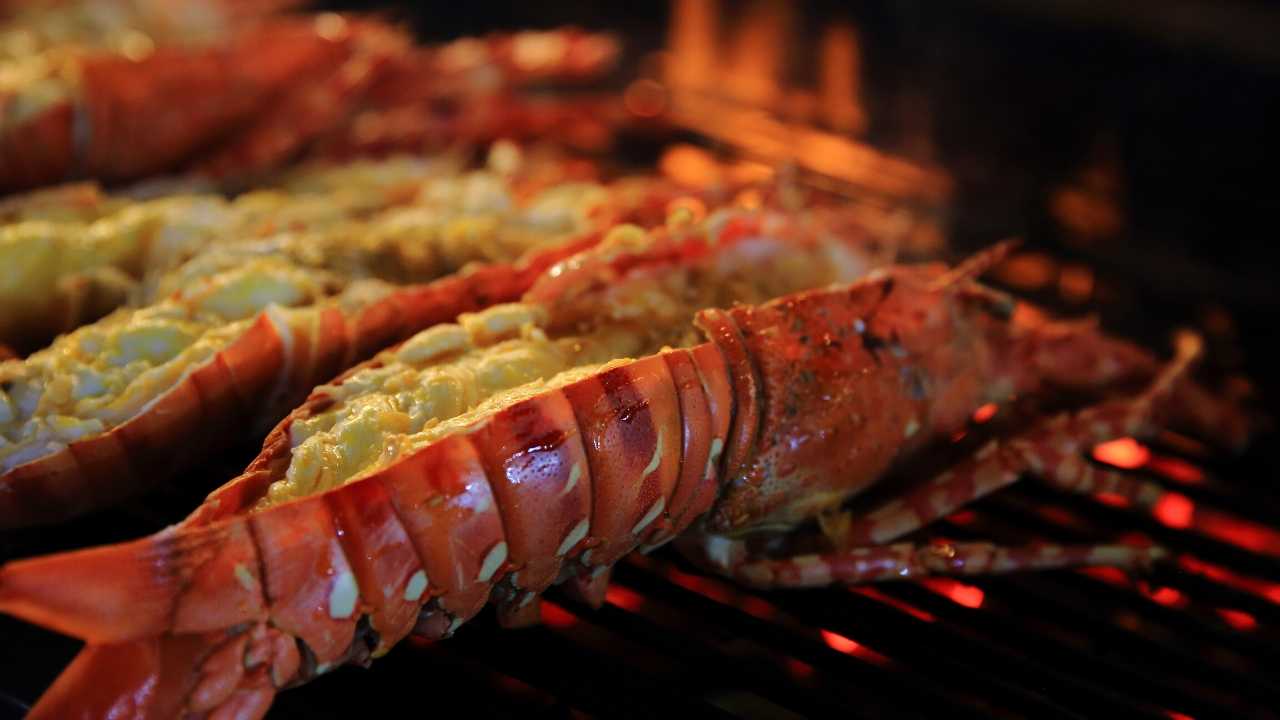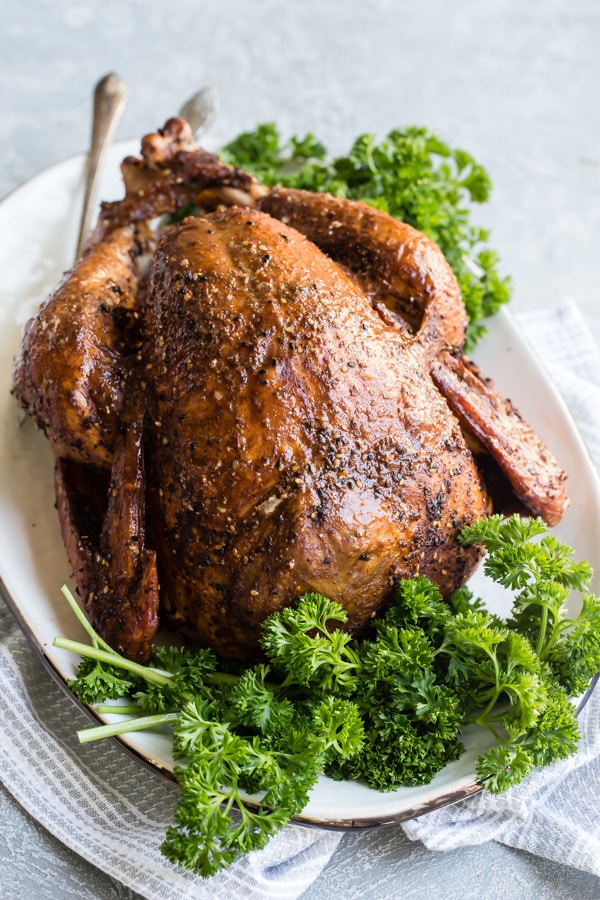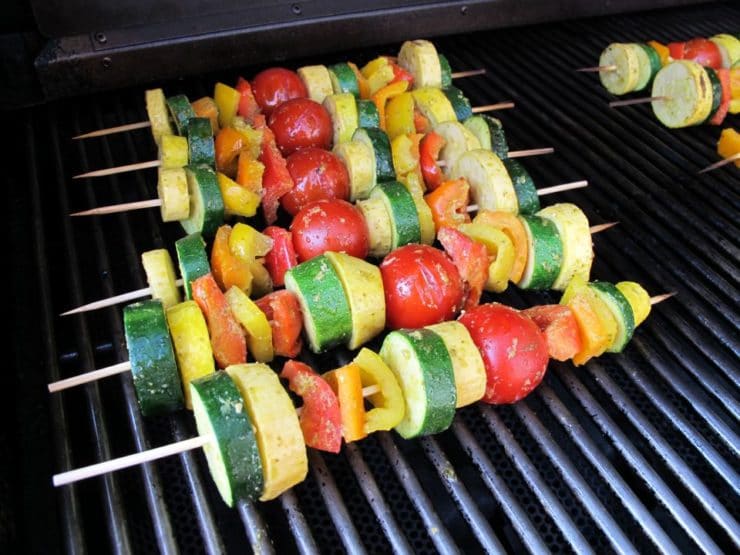
You can grill steak with the lid open or closed. A closed lid is best for thin foods because it reduces the amount of heat exposure and increases the cooking time. Partially open lids are better for thicker foods as they allow heat to reach all sides. A partially open lid has the disadvantage that it doesn't allow you to monitor your food as closely. However, the results will still be the same. If you're unsure about which method to use, read this article.
Season steaks well before you close the lid on a grill. If you are using a sealed barbecue grill, make sure that the lid is opened before you start cooking. Closed lids can dry out meat and make it tougher so use a low temperature. If you plan to grill thicker cuts of meat, make sure to keep the lid tightly closed. To ensure even cooking, you should rotate the steaks after approximately two to three minute.

It is best to grill thin cuts of steak with the lid off. It will give you the best flavor and the most tender steak. A lid placed on a steak will cause it to become dry and stale. Once the steak has reached the desired temperature, flip it. To avoid overcooking, use tongs to turn the steak once every five minutes.
Season the steak thoroughly before you place it on the grill. Place the steak on the hot side of the grate right above the coals. After approximately 2 minutes, turn the steak around and place it on a side that is not touching the coals. You may be done cooking a thinner cut of meat once it has a sear, but for thicker ones, you should keep the lid closed until it reaches the desired temperature.
When cooking a steak, you must remember to season it twice or four times before cooking it with a lid. A steak should not be marinated or seasoned with more than two teaspoons of salt. Only add a small amount oil to the steak. If it is thicker than usual, the steak should be cooked through. A lid makes a thinner steak taste better and will preserve its color. You should not cover thicker cuts of meat.

You need to know how to flip steaks. After the first side has been seared, it is best to only flip it once. Before you flip it, cook the second side for about a minute. A thin steak will take between 10 and 15 minutes depending on its thickness. Before you place it on a plate, let it rest for at least 10 minutes.
FAQ
How much does culinary school cost?
The cost of a culinary school depends on where you are, how much you study, and what program or course you choose. The average tuition ranges from $10,000-$30,000 per year. Most students graduate with about $20,000 in debt. There are some programs that offer grants and scholarships as well as work-study options.
How Do I Learn About Cooking?
There are numerous cooking classes offered across the country. You can find courses in baking, pastry and wine tasting at many schools. If you want to learn more about cooking, you can enroll in a class at a local community college or vocational school, or attend one offered by a private institution.
How do you store leftovers best?
Tupperware containers are a good choice for leftovers. These containers are great for keeping food fresh and preventing odors from growing. They keep foods warmer for longer. Freezer bags can be used to freeze any leftover food. For food that you are freezing, make sure to place it inside another freezer bag. Once the food has been frozen, transfer it into an airtight container such as a zip lock bag.
What are the advantages of using a slow cooker to cook?
Slow Cookers are very useful because they allow you to prepare delicious meals without wasting time. Slow Cooker Recipes are often healthier than traditional recipes because they require less oil and fat. Also, slow cooker recipes are easy to use because they do all the work while you sleep.
What are the requirements to become a chef?
To become a chef, you must have a bachelor's degree in culinary arts. A series of tests administered to you by the ACF will also be required. Once you've completed these requirements, you'll receive a certificate verifying your qualifications.
Statistics
- In the United States, the category is estimated at $23.2 billion annually and is growing faster than the market. (washingtonpost.com)
- On average, chefs earn $58,740 a year, according to the BLS. - learnhowtobecome.org
- You'll be amazed that over 90% of CIA students receive scholarships and grants to finish their culinary studies. (ischoolconnect.com)
External Links
How To
How to make a perfect omelet
Omelets are a favorite breakfast food of mine. But how do they turn out so perfectly? There are many recipes and methods I tried, but none worked. So I am sharing some tips and tricks today to help you make fluffy, delicious omelets every morning.
It is important to know that eggs can be temperamental when making omelets. The eggs must be fresh from an organic source and kept at room temperature until they are ready to be cooked. If they are not kept cold enough, the whites won’t form properly. The yolks will also break down too quickly and become runny. This can make your omelets look bizarrely colored. If you're going to cook them immediately, it is best if the eggs are still warm.
You might also try separating the egg before adding to the pan. You don't want any white to get mixed up with the yolk because this could cause the omelet to curdle.
You might burn the bottom of the egg if you place the egg directly on the stovetop. This could ruin the texture of your omelet. Instead, put the egg in the microwave for 10 seconds before putting it into the pan. The microwave heat cooks the eggs just right without overcooking them.
Next, let’s talk about mixing the egg. You want to mix the eggs thoroughly before you add them. To do this, take the bowl from the mixer and flip it upside-down. Next, shake the bowl vigorously. By doing this, the egg is thoroughly mixed with the air in the bowl.
Now comes the fun part: adding the milk to your mixture. First, pour half of the milk into the beaten eggs and then fold the eggs gently into the remaining milk. You don't need to worry if streaks remain. They will disappear once you flip your omelet.
After folding the eggs fold the pan onto medium heat. When the oil starts to hot, wait for the pan to cook. Once the oil begins to heat, add 1/4 cup butter and swirl the pan to coat it. Carefully open the pan's lid and add salt to the pan. An additional pinch of salt will prevent the omelet form sticking to your pan.
Once the omelet has formed, cover the pan again and wait for the top side to set completely. Flip the omelet with a spatula, or flip it upside down. Cook the opposite side for another minute. Remove the omelet from the pan and serve immediately.
This recipe is best when used with whole milk. But, you can use skimmed milk as well.